The easiest way to get higher speed from a ball screw assembly (within the screw’s critical speed limit, which is based on diameter, length, and end fixity) is to use a higher screw lead. But increasing the lead of the screw has a drawback: as the lead increases, the number of effective turns in the ball nut is reduced. This means fewer balls in the load-carrying zone, and as a result, lower load capacity.
But a high-lead screw has a great deal of “dead” space between the ball tracks — space that can be used for additional, independent ball tracks. And more ball tracks means more effective turns, more load-carrying balls, and higher load capacity.
A ball screw with multiple, independent ball tracks is referred to as a “multi-start ball screw.”
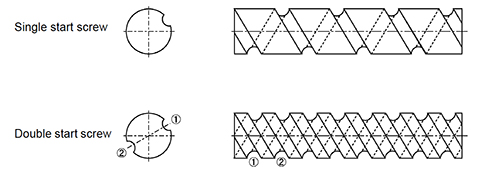
Image credit: NSK Corporation
Multi-start ball screws and nuts have several advantages, with the first being the increase in load capacity compared to single-start versions. They also offer a safety mechanism not found in single-start screws. If one start, or ball track, is damaged, balls in the other track(s) can still help to carry the load and prevent immediate, catastrophic failure. And using a single-start ball nut on a multi-start screw shaft can reduce maintenance costs. If the ball nut becomes damaged, it can be removed, and a new nut can be installed on a different, unused track of the ball screw. This can provide a significant time and cost savings by avoiding the need to disassemble and replace the entire screw and nut assembly.
When using a multi-start ball screw, there are some design and operation considerations that differ from single-start screws. One of these considerations is end bearings. The standard end bearings for a given size (diameter and lead) single-start screw may not have enough capacity to support the higher load capability of a multi-start screw of the same size, necessitating the use of larger or heavier-duty end bearings. Another consideration is sealing. Multi-start ball screws have different cross-sectional profiles than single-start screws. So if ball nut seals are ordered separately from the screw assembly, or if they need to be replaced in the field, make sure they’re designed for the appropriate number of starts on the ball screw.
In terms of operation and maintenance, multi-start ball nuts typically require a larger quantity of lubrication than single-start versions, due to the larger number of balls in the load-carrying zone. This makes it important to check and follow the manufacturer’s lubrication recommendations for the specific, multi-start ball nut being used.
The terms “lead” and “pitch” are often used interchangeably, but they refer to different aspects of a screw’s design. The lead of a screw is the linear distance traveled for each complete revolution of the screw. Pitch is the distance between screw threads.
For a single-start screw, the lead and pitch are equal. But for a multi-start ball screw, the lead equals the pitch multiplied by the number of starts, or, conversely, the pitch equals the lead divided by the number of starts. This is because the pitch measures the distance between screw threads, regardless of whether the threads are of the same start, or track.

Image credit: NOOK Industries, Inc.

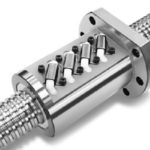
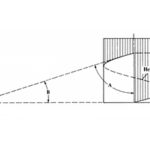
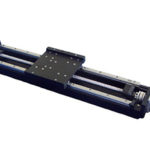
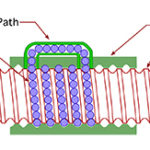
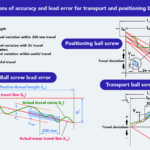

question, if you switch from a single start design to a multiple start design, do you have to increase you motor torque, or with the same motor you can maintain the same power screw load capacity?